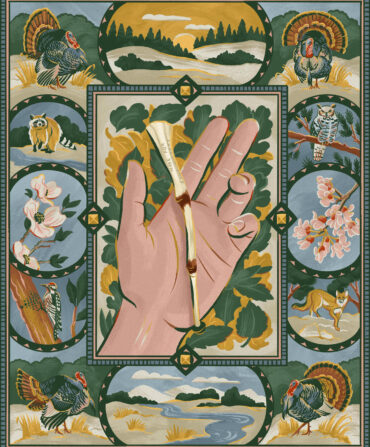Land & Conservation
Hope for a Disappearing Florida Bird

Photo: Carlton Ward
In 1987, the final remaining dusky seaside sparrow, native only to Florida, died in captivity, marking the extinction of the species. That was the last bird in the United States to blink off the landscape entirely. Today, the most endangered bird in the country is also a sparrow, also in Florida—and scientists are determined not to let it disappear. Earlier this month, biologists released the 501st captive-bred Florida grasshopper sparrow into the only place it’s found, the wild dry prairies in the central portion of the state. That bird was a fifteen-gram, forty-day-old brown-and-tan embodiment of a last-ditch conservation effort that just might turn the tide for the struggling species.

Photo: Carlton Ward
The 501st captive-bred Florida grasshopper sparrow flies into the wild.
Florida grasshopper sparrows aren’t immediately flashy. They have the buzzing song of an insect (that’s how they got their name), and they’re tiny and hard to spot. “You can look right at one and not see it,” says Andrew Walker, the president of the Fish & Wildlife Foundation of Florida, one of the many partners in the sparrow’s conservation efforts. “But up close, they are really beautiful birds, and a symbol of a Florida habitat that is as endangered as they are.”

Photo: Carlton Ward
A male grasshopper sparrow sings on the prairie.
A subspecies of the eastern grasshopper sparrow, the birds are darker in color and nonmigratory, highly specialized to live among the grasses and shrubs of Florida’s dry prairies. The ecosystem historically stretched across central Florida and frequently burned naturally. But today, only about ten percent of it remains. When the sparrow’s populations on that remaining land fell to forty-eight males with just thirty breeding pairs, biologists feared the bird would be extinct within just a few years without a captive breeding program. “But when you have so few left out in the wild, it’s a really tough decision to bring birds into a conservation facility to try to breed them,” says Juan Oteyza, the lead sparrow research scientist for the Florida Fish and Wildlife Conservation Commission.

Biologist Juan Oteyza examines a sparrow before release.
Ultimately, they had no choice. In 2016, biologists captured a few precious pairs of wild grasshopper sparrows for breeding, with the future of the species hanging in the balance. Under conditions that mimic their habitat in the wild, the birds successfully produced eggs—they can produce multiple nests a season—and those babies were soon released back into the wild. “We saw a change for the better in the population trend in 2019, when we started releasing more birds,” Oteyza says. Since then, the numbers have slowly and steadily risen: In 2021, there were eighty-four males, with forty breeding pairs, and the numbers from 2022 are on track to be even higher. Captive-bred birds are themselves breeding in the wild—a key element of success—and now make up nearly half the population at the primary release site.

Photo: Carlton Ward
The sparrows spend the night on the prairie before their release the next day.
But as Oteyza points out, the breeding program is not itself a long-term solution. “This is buying us time to do the research to figure out the factors in their decline,” he says. The biologists working to save the sparrow do far more than breed and release birds. They conduct careful “egg swaps” when a pair in captivity and a wild pair have eggs at the same development stage to boost genetic diversity. They build cages around wild nests to protect them from predators, and they raise nests off the ground to prevent flooding. They burn the prairie habitat, simulating historic fire regimes. And they are racing to understand the reasons for the species’ decline beyond the loss of habitat. Nest predation, including by invasive fire arts, as well as habitat degradation and low population size, are all contributing factors.
In the meantime, the releases will continue. This month, twelve new young birds entered the wild. “The results are encouraging,” Oteyza says. “The trajectory is changing, and releasing over 500 birds was a big milestone.”

Photo: Neil Pearson
Biologists hope that the sparrows will soon have self-sustaining populations in the wild.
The number represents hope that what happened to the dusky seaside sparrow thirty years ago won’t repeat itself with the Florida grasshopper sparrow. “You go out in the morning to this dry prairie and you hear these birds buzzing, calling, looking for a mate, and they’re part of the Florida landscape,” Oteyza says. “We can’t lose them, because losing them would be losing part of Florida.”







